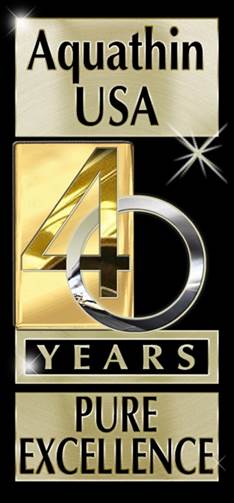Prescription drugs turn up again in water.
"Aquathin OP-ED Commentary"
Need another reason to drink from an Aquathin patented RODI water purification system? Take a look at this!
Prescription drugs turn up again in water
U.S. Water News Online
ALBUQUERQUE -- State environmental officials have new evidence that prescription drug residues are making their way into New Mexico's rivers.
Initial tests last summer turned up traces of some drugs. A second round of tests have uncovered caffeine and residues from anti-depressants
and painkillers in samples from around the state.
Dennis McQuillan of the New Mexico Environment Department said the results could have been worse.
``We really didn't see the magnitude of the drugs that Europeans have seen,'' he said.
Germany, England, and other countries have been studying the problem of pharmaceutical residues in water for years, but the issue is just
gaining widespread attention in the United States.
McQuillan theorized that New Mexico's intense sunlight might break down the drug compounds. Or the state's less dense population could
explain the generally favorable results, he said.
No drug residues have been found in drinking water, and officials said there is no solid evidence of human health risks.
The drug residues could be getting into rivers several ways. People who take prescription medicine don't absorb all of it, so some is excreted
and ends up in the sewage system. Unused medicines also can be flushed down the toilet. Drugs given to livestock may also be excreted and
then washed into rivers by runoff.
Scientists next month will take water samples from the middle Rio Grande Valley. If those tests show no widespread contamination or high
levels of drug residues, environmental and health officials will breathe a sigh of relief.
``If we don't find anything there, we won't find anything in the state,'' McQuillan said.
On the drawing board for the future is testing for residues of antibiotics, something the state laboratory isn't yet able to do. Current testing
methods cover 28 drugs but don't include cholesterol or cardiovascular drugs.
Last summer, officials found traces of estrogen-type drugs in the San Juan River near Bloomfield. The levels were high enough to cause
sexual disruption in fish.
Residues of painkillers and anti-seizure medicine also were found in treated waste water flowing into the Rio Grande at Espanola.
McQuillan said the latest tests did not turn up estrogen substances but they did find drug residues in treated sewage effluent flowing
into rivers in Farmington, Santa Fe, and Las Cruces.
There also were some residues detected in the Rio Grande: an anti-depressant at Buckman north of Santa Fe, and caffeine at
Sunland Park south of Las Cruces. "I expected to find a whole lot more'' McQuillan said.
FOR THE BEST TASTE IN LIFE
Think Aquathin...AquathinK!!
Edited from Tech Bank 2/22/01


